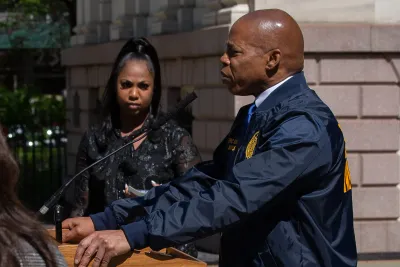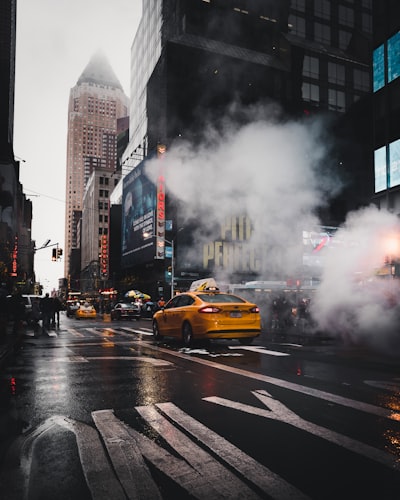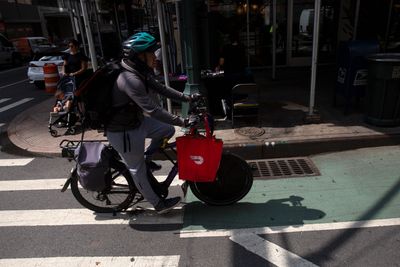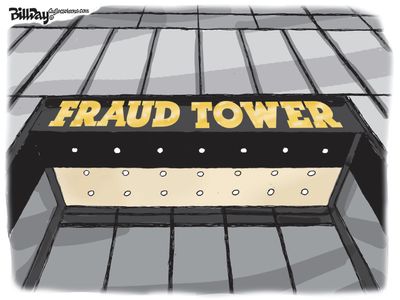Jose Martinez, The City

This article was originally published on Jul 6 6:21pm EDT by THE CITY
/cdn.vox-cdn.com/uploads/chorus_asset/file/23674531/070622_nyc_ferry_lander_4.jpg)
Former Mayor Bill de Blasio’s signature NYC Ferry took taxpayers for a pricey ride when city economic development officials underreported its costs by nearly a quarter of a billion dollars, City Comptroller Brad Lander said Wednesday.
Lander accused the city of “playing hide the ball” on ferry finances and criticized the economics and oversight of the watery transportation network, which launched under de Blasio in 2017 and promised heavily subsidized $2.75-per-ride trips from piers in all five boroughs.
The comptroller’s report says the Economic Development Corporation rang up $758 million in ferry-related costs from July 2015 through the end of last year — but only reported $534 million in expenses in its audited financial statements and other records.
“This is a very substantial financial underreporting and mismanagement,” Lander said while standing near Pier 11 in Lower Manhattan. “$250 million of underreporting raises a lot of questions and those questions should be asked.”
Auditors found that the city’s actual subsidy on each ferry trip rose to nearly double the $6.60-per-trip subsidy that the de Blasio administration originally projected. The city subsidy amounted to $12.88 for Fiscal Year 2021, according to the report, not the $8.59 that was originally reported.
“It is a premium service, like express buses and it is also a tourist commodity,” Andrew Rein, president of the Citizens Budget Commission, told THE CITY. “We should be pricing the ferries accordingly and that should be able to reduce that subsidy.”
The comptroller’s report follows a series of stories in THE CITY about NYC Ferry, including one in January that revealed how de Blasio’s budget office supplied a $23.2 million infusion for the service before he left City Hall at the end of 2021 — after the service had previously been funded by the EDC.
“The ferry system was eating the EDC budget,” said Rein, whose nonprofit organization detailed in a 2019 report how subsidies for NYC Ferry are among the highest in the country for comparable ferry networks.
Lander’s report calls into question the purchase of new boats — something THE CITY flagged in April 2019 — as well as the $2.75 fare that de Blasio insisted on for the privately operated ferry trips. The price of an NYC Ferry trip is considerably lower than one on similar services in San Francisco and Boston.
On the San Francisco Bay Ferry, for example, fares are determined by three different zones, with the priciest zoned trip set at $11.25 for a paper ticket or $9.00 for rides paid for through mobile devices or the Clipper fare-payment system.
De Blasio, in a statement through a spokesperson for his campaign for Congress, said he could not comment on Lander’s report because he had yet to fully review it.
“But if there are issues with underreporting at EDC, or by the ferry operators, that should be remedied and whatever accountability or reforms that are needed should be adopted,” de Blasio said.
/cdn.vox-cdn.com/uploads/chorus_asset/file/23676488/2018_deblasio_nyc_ferry_1.jpg)
Mayor Eric Adams said in February that he is open to “creative pricing” based on where riders are located, which could eventually result in a fare structure that could vary by route. He pledged at the time to look at NYC Ferry’s cost structure and management.
EDC also plans to issue a request for proposals for a new operating agreement, according to Fred D’Ascoli, the agency’s executive vice president and chief financial officer.
“NYCEDC has learned much in its first years of service and is committed to using that knowledge to optimize NYC Ferry operations and improve the mechanisms by which we administer the system,” D’Ascoli wrote in a response to the comptroller’s office.
The ferry service now offers service along six routes, including the East River route with stops in Brooklyn, Queens and Manhattan that was previously operated by another company before being integrated into NYC Ferry in 2017.
An Adams spokesperson called NYC Ferry a “critical transportation option” used by thousands of riders daily, while pinning some of its problems on de Blasio.
“Concerns around the system’s finances are well known — the prior administration rushed NYCEDC to establish a large and complex ferry system, and we are keenly aware there is room for improvement,” the spokesperson said. “We are working actively on an innovative plan to write a new chapter for the ferry system centered on true financial sustainability and access for communities that need it.”
EDC officials last month said that plans to expand ferry service to Coney Island have been indefinitely delayed. The agency had originally planned to launch Coney Island service last year.
At the pier at the end of Wall Street, NYC Ferry riders praised the $2.75 fare, while acknowledging they would be willing to pay more.
“The price is excellent for the customers, but I don’t know what’s going on as far as the city,” said Christopher Johnson, 60, of Harlem, as he waited to catch a Rockaway route ferry to the beach. “I’d do like $2 more, just look at this.”
But at $2.75 a ride — the same price as a subway or bus trip — NYC Ferry system operates on its own fare payment system, so riders who transfer between the boats and mass transit pay two fares.
“It’s a nice experience, but it’s not something that I go ahead and use every day,” said Ricardo Hernandez, 25, of Washington Heights. “This is more like a luxury.”
THE CITY is an independent, nonprofit news outlet dedicated to hard-hitting reporting that serves the people of New York.




